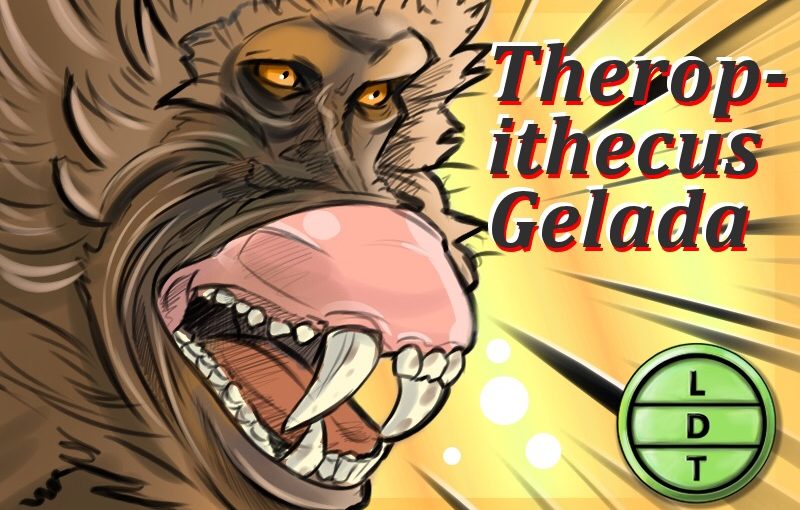“And to day we’re talking about a guilty little monkey. But more on that later!”
The rules of engagement vary widely in the animal kingdom, especially when it comes to romance. But whether a species has multiple mates, or just one, at least there are rules. The Gelada Monkey may seem like a tasty Italian treat, but in reality, it hides a dark secret. Going against their own instincts, two star-crossed lovers will actively deceive their fellow monkey in order to rendezvous in secret. But infidelity never goes unpunished here in Life, Death, and Taxonomy.
Description
Gelada’s look similar to baboons with stocky bodies and strong protruding jaws.
- They’re often called the bleeding heart baboons
- However, they aren’t technically baboons.
- Instead they have their own genus of grass eating monkeys.
- They are called “bleeding heart” because of a characteristic bare, red patch on their chest.
- They also have thick brown hair that keeps them warm in the high ethiopian mountain nights.
Males have large canine fangs that are among the largest among primates relative to body size.
- Males grind their top canines against the bottom row to sharpen them in preparation for a fight.
Measure Up
Welcome to the listener’s favorite part of the show (until empirical evidence shows otherwise), the part of the show where I pose quiz questions to Carlos to convey the animal’s size and dimensions in relatable terms. Welcome back to the season of woe. The season in which the questions are harder and more relatable than ever.
It’s also the part of the show that’s introduced by either a listener or an animal. If you would like to submit your own measure up intro, just say, sing, or bark the words “measure up” into your phone’s recording app and email it to ldtaxonomy at gmail dot com. Today we have a new measure up from long-time friend of the show Julia. You may recognize her voice from the end stinger! Without further ado the listeners favorite part of the show.
Male weight – 18.5 kg (40.8 lb)
- How many galadas go into the weight of the world’s largest gelato, not including the cone (70 kg/154 lbs)?
- Hint: The gelatto cone was made by itallian confectioners at the International Exhibition of Ice Cream. The cone was made of more than 2000 wafers and 700 kg of white chocolate coating.
- Answer: 3.7 monkeys
Length – 50–75 cm (19.7–29.5 in)
- 25 inches
- How many geladas go into the elevation of the ethiopian highlands? (4,550 m (14,930 ft)
- Hint: The ethiopian highlands are called the Roof of Africa and even the lowest elevation rarely dips below 4,900 ft.
- Answer: 7,166 monkeys
Fast Facts
- They form among the largest groups among primates with numbers as high as 1500 individuals.
- Group size is highly dependent on food availability.
- The size of your group is determined by the advantage you get in finding food with higher numbers verses the disadvantage of having to share.
- However, monkeys that live on grass can find food in abundance as long as the grass grows.
- Geladas have jagged molars that allow them to grind grass efficiently, which helps them to survive on an energy poor resource like grass.
- Other grass eaters like cows have complex digestive systems that can get as much nutrients as possible from grass.
- Geladas don’t have that, instead, their efficient teeth help to pulverize grass to help their digestive system to get the most nutrients from it as possible.
- Geladas can also eat snails, roots, lizards, and pollen.
- Gelada females signal readiness to mate with their chests.
- Their chest grow red beads that get bigger when they’re ready.
- The beads shrink and grow paler when they are reaching the end of their mating cycle.
- Males will fight, sometimes to the death.
- If a rival male takes over a harem, he may kill the defeated male’s infants.

